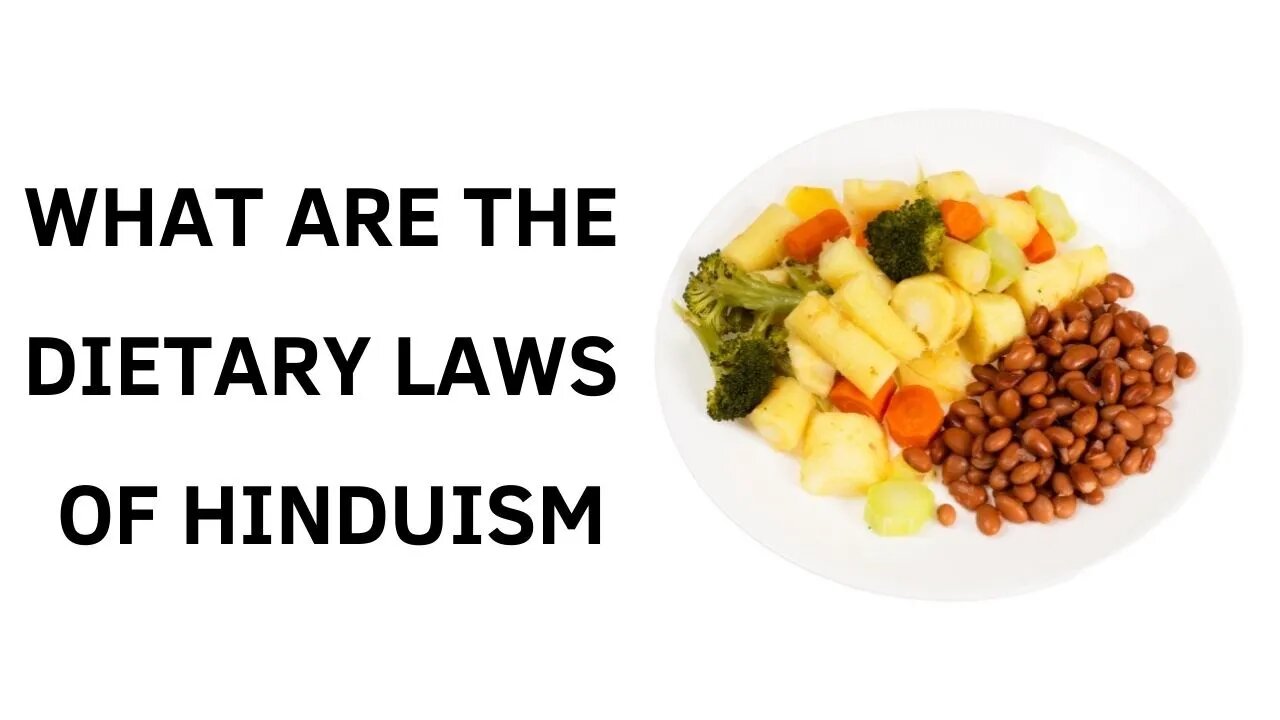Premium Only Content

LEARN ABOUT THE DIETARY LAWS OF HINDUISM
The vast majority of Hindus adhere to a Lacto-vegetarian diet, which excludes the consumption of meat as well as eggs; however, some may consume lamb, chicken, or fish. Because the cow is revered as a sacred animal, beef is never consumed, but dairy products and other items derived from cows are. Fats produced from animals, such as lard and dripping, are not allowed to be used.
Meat, eggs, fish, spices, onions, garlic, hot peppers, pickles, and other items that may be described as pungent or spicy are included in this category. The most ideal kind of food, known as Sattvic, is food that does not irritate the stomach and that cleanses the mind; examples of Sattvic foods are fruits, nuts, vegetables, and grains in their full form.
Since Hindus hold the belief that all living things are on an equal footing, it follows that they are lacto- and fruitarians. They abstain from eating meat for the same rationale that would lead you to avoid eating a human being. Since humans and animals are on an equal footing, neither are their respective foods. This indicates that they do not consume any meat and do not eat the fruit that grows on trees.
Rice, pearl millet, whole-wheat flour (also known as aa), and a wide range of lentils, including masoor (often red lentils), tuer (pigeon peas), urad (black gram), and moong are some of the staple foods in Indian cuisine (mung beans).
Read our Blog: https://ramabaktha.site/what-are-the-dietary-laws-of-hinduism/
Support our YouTube Channel with a small donation: https://www.buymeacoffee.com/Hindubaktha
-
 2:14:55
2:14:55
Matt Kohrs
9 hours agoBreaking Market News, Earnings Review & Live Trading $1M || The MK Show
19.2K1 -
 LIVE
LIVE
LFA TV
15 hours agoMA-GAZA STRIP! | LIVE FROM AMERICA 2.5.25 11am
4,493 watching -
 LIVE
LIVE
Caleb Hammer
1 hour agoRadical Femcel Is Literal Garbage | Financial Audit
239 watching -
 38:57
38:57
Rethinking the Dollar
46 minutes agoWednesday Morning Check-In | Trump's Actions Are Driving Destroying The Dollar
1 -
 15:36
15:36
Dr David Jockers
1 hour agoWhat's the Dark Side of Eggs That No One Talks About?
361 -
 38:35
38:35
BonginoReport
5 hours agoTrump is Conquering a Foreign Land and It’s Not Greenland (Ep.133) - 02/05/2025
81.5K189 -
 LIVE
LIVE
Wendy Bell Radio
6 hours agoTaking Out The Trash
12,060 watching -
 1:22:24
1:22:24
Graham Allen
4 hours agoDems Try To RAID USAID Office!! + Trump Meets With Netanyahu In The Oval Office! Peace Is HERE!!
40.2K42 -
 1:01:16
1:01:16
Randi Hipper
1 hour agoGROUNDBREAKING CRYPTO BILL INTRODUCED! WHAT THIS MEANS FOR BITCOIN INVESTORS
9.32K1 -
 LIVE
LIVE
Vigilant News Network
15 hours agoRFK Jr. Clears Major Hurdle for HHS Secretary | The Daily Dose
871 watching